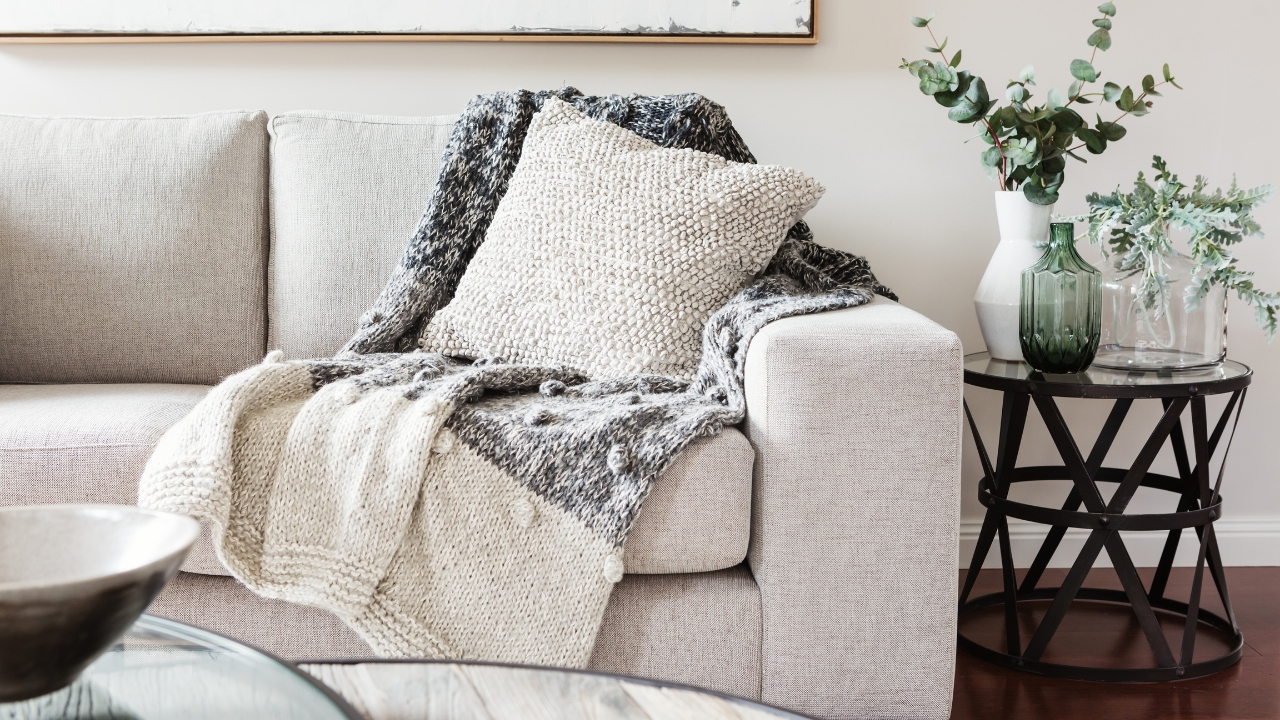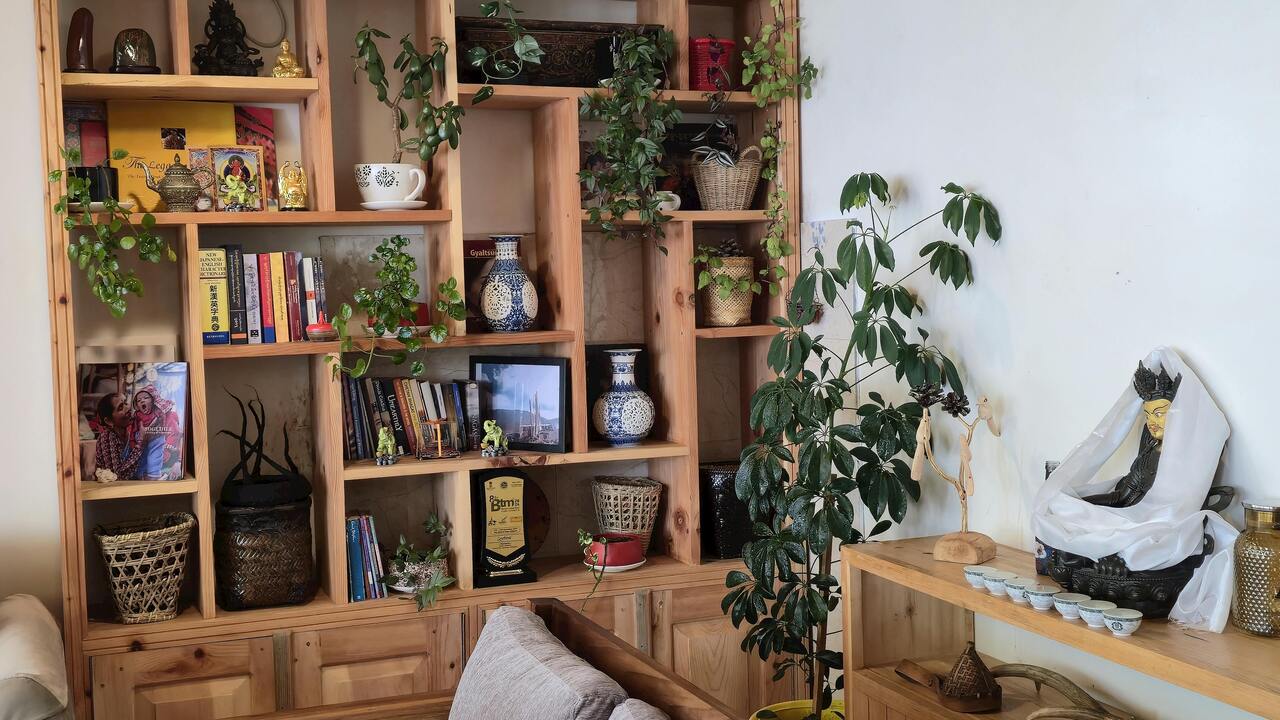These budget swaps look designer — but only if you style them right
There’s a fine line between “affordable but elevated” and “cheap and obvious.” Budget decor can absolutely look high-end when it’s done right—but only if the way you style it supports the look.
The difference comes down to small details: how you layer textures, balance proportions, and pay attention to placement. You can make nearly any budget piece look like it came from a design showroom if you know how to pull it together.
Choose the right scale
The fastest way to spot a cheap piece is when it’s the wrong size for the space. A too-small rug, too-high curtain rod, or undersized lamp instantly throws off the proportions and makes even nice decor look wrong.
When you’re buying on a budget, pay attention to scale before price. A $60 oversized lamp or $80 rug that fits right will always look better than something “cute and cheap” that’s half the size it should be. Proper proportions automatically make a room feel more intentional and balanced.
Keep your color palette tight
Mixing too many colors makes affordable decor look random. The key to making budget items look designer is consistency. Pick two or three main tones and let everything else fall within that range—neutrals, natural wood, muted greens, or blacks and whites always work well together.
You don’t need everything to match, but you do want it to flow. If your new throw pillows or wall art clash with what’s already there, it cheapens the whole space. When your colors coordinate, even a $20 lamp looks like part of a designer plan.
Focus on texture instead of pattern

Patterns can be tricky to pull off on a budget because cheaper materials tend to print poorly or fade fast. Texture, on the other hand, instantly adds depth and looks more expensive.
Mix materials like woven baskets, linen curtains, or ceramic vases with matte finishes. Layering different textures creates visual interest without feeling busy. It’s one of the easiest ways to make an affordable space feel curated instead of crowded.
Upgrade hardware and finishes
Budget furniture and decor often come with hardware that gives them away—shiny, lightweight, or oddly colored metal. Replacing handles, knobs, or pulls can completely change the look.
You can find solid, high-end-looking hardware for under $30, and it makes your furniture look custom. The same goes for lighting—swapping out a dated shade or chain can make a clearance fixture look like it came from a design boutique.
Style intentionally, not symmetrically
Designer spaces rarely look too perfect. Budget decor can look stiff when everything is centered or matched exactly. Instead, try offsetting items—like stacking books under one side of a vase or hanging art slightly lower than expected.
A little asymmetry feels natural and effortless. It draws the eye in a way that looks more expensive and lived-in, rather than staged or store-bought.
Stick to fewer, larger pieces
When decorating on a budget, it’s easy to fill every surface with small items because they’re cheaper individually. But a bunch of little pieces can make a space feel cluttered and low-quality.
Instead, save your money for one or two larger decor items—a substantial vase, a statement mirror, or a big piece of wall art. Bigger pieces create presence, while too many small ones just create noise.
Layer your lighting
A single overhead light makes any room feel flat. If you want your budget decor to look intentional, add layers of lighting—a table lamp here, a wall sconce there, or even candles grouped together for warmth.
Layered lighting highlights your space’s best features and hides imperfections. It softens everything, which helps budget materials and finishes look richer than they are.
Avoid overdecorating

Trying to make a home feel “finished” often leads to adding too much. But empty space can actually make budget decor look more refined. Give your eyes room to rest between objects and furniture.
When each piece has a little space around it, it stands out more. You’ll notice that designer rooms never feel packed—they feel balanced, even when there’s not a lot in them.
Keep surfaces clean and styled
No matter how nice your furniture is, clutter will kill the look every time. Take five minutes to tidy up surfaces daily. Corral small items in trays or baskets so the eye sees order, not chaos.
Even the best budget swaps lose their charm if they’re surrounded by cords, receipts, or half-empty cups. A clean space automatically looks more high-end, no matter how much you spent on it.
Finish with personal touches
The secret to making any space look designer is making it feel lived in. Mix in personal details—family photos in neutral frames, meaningful art, or thrifted finds that have a story.
When your home reflects you, it looks intentional instead of cheap. Budget swaps can fool the eye, but it’s the thoughtful styling behind them that truly makes them feel high-end.
Like Fix It Homestead’s content? Be sure to follow us.
- I made Joanna Gaines’s Friendsgiving casserole and here is what I would keep
- Pump Shotguns That Jam the Moment You Actually Need Them
- The First 5 Things Guests Notice About Your Living Room at Christmas
- What Caliber Works Best for Groundhogs, Armadillos, and Other Digging Pests?
- Rifles worth keeping by the back door on any rural property
*This article was developed with AI-powered tools and has been carefully reviewed by our editors.







